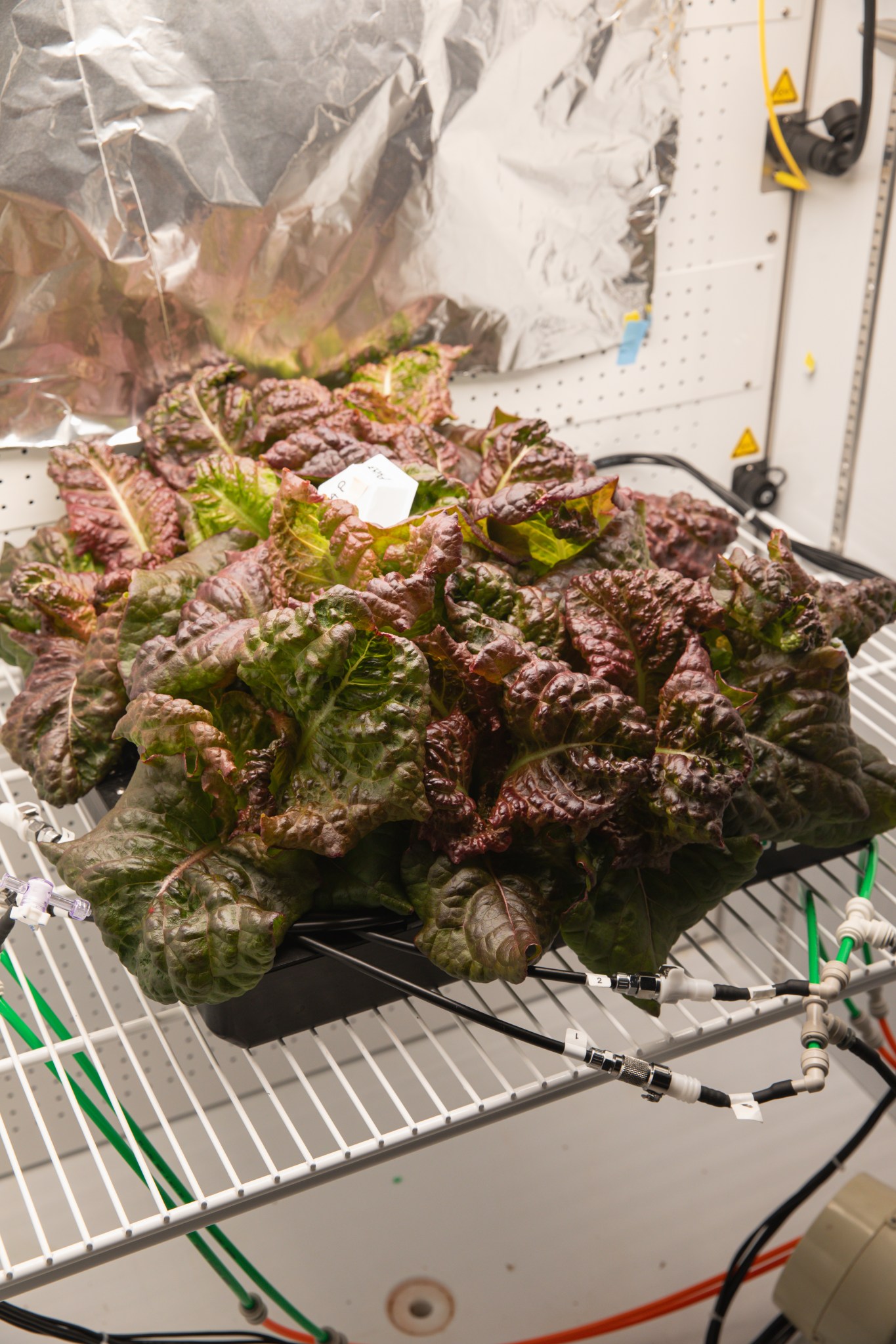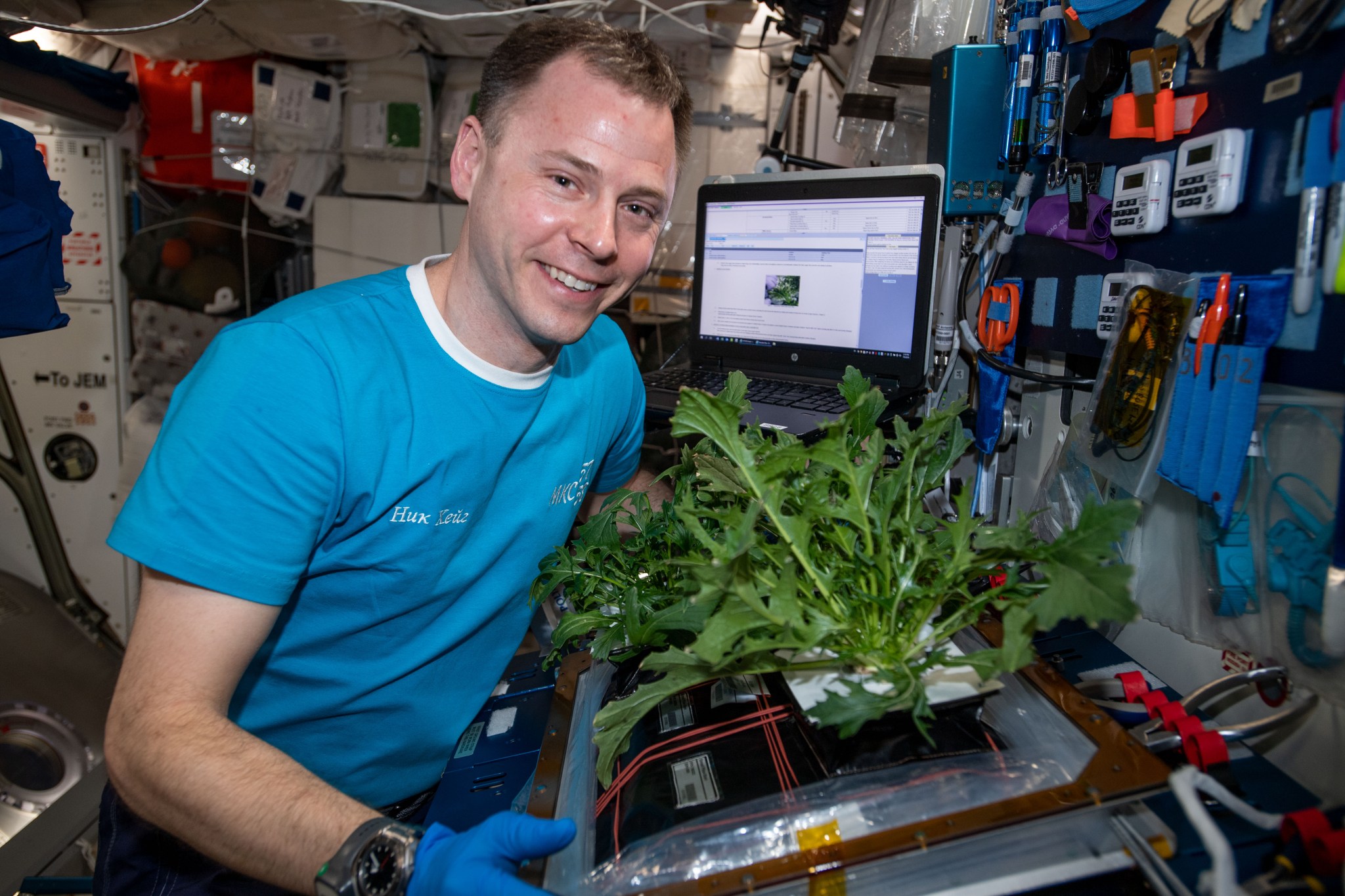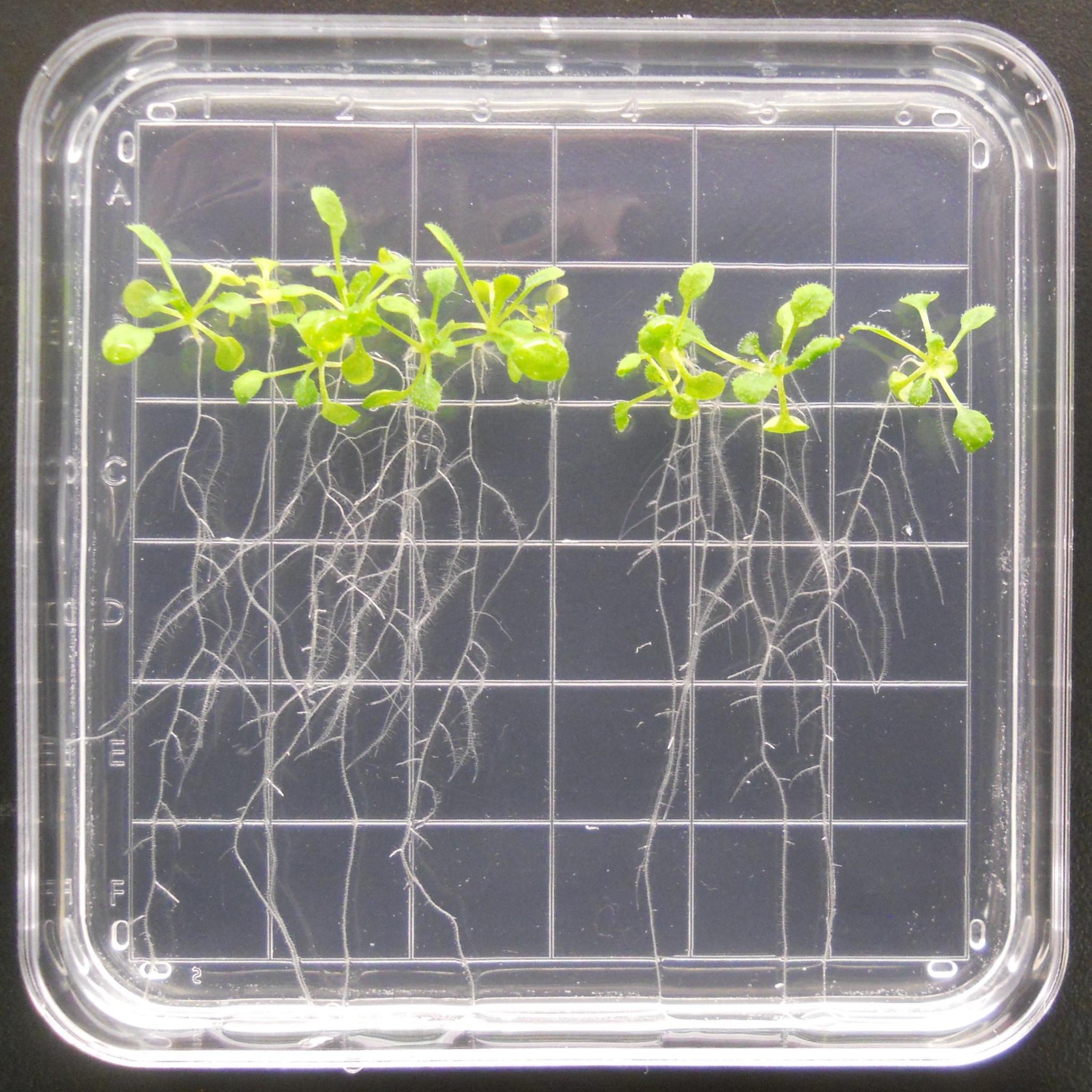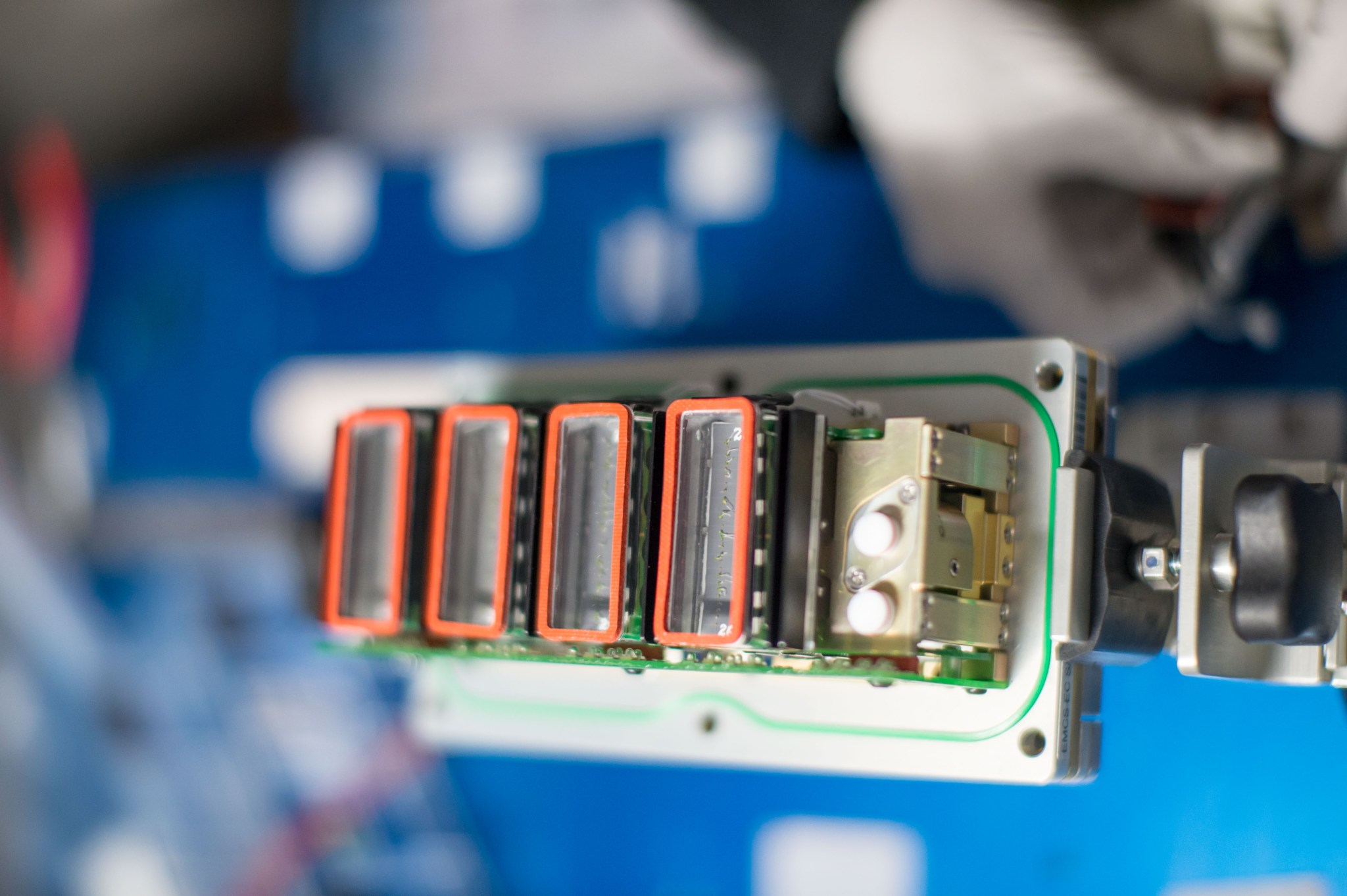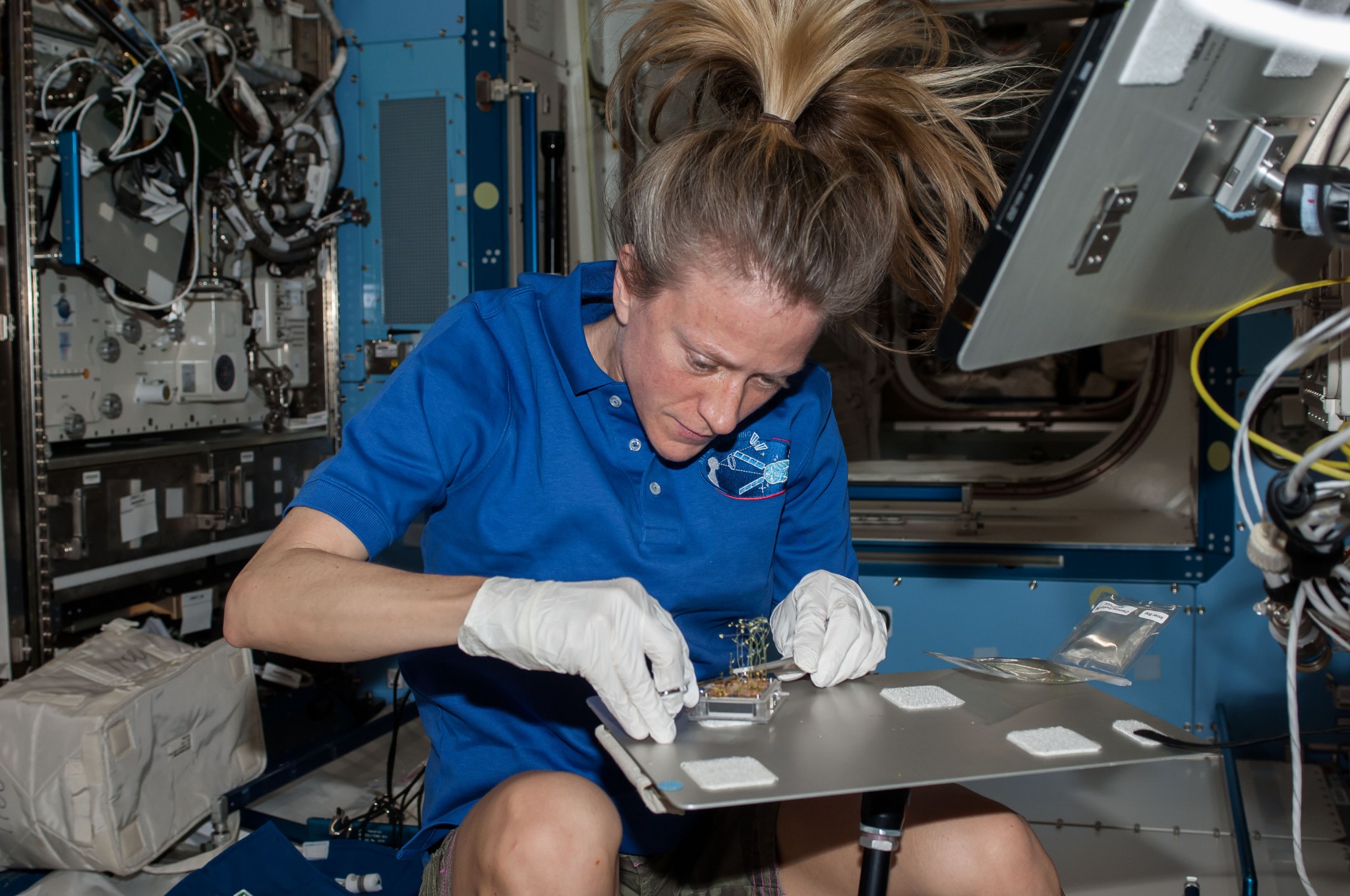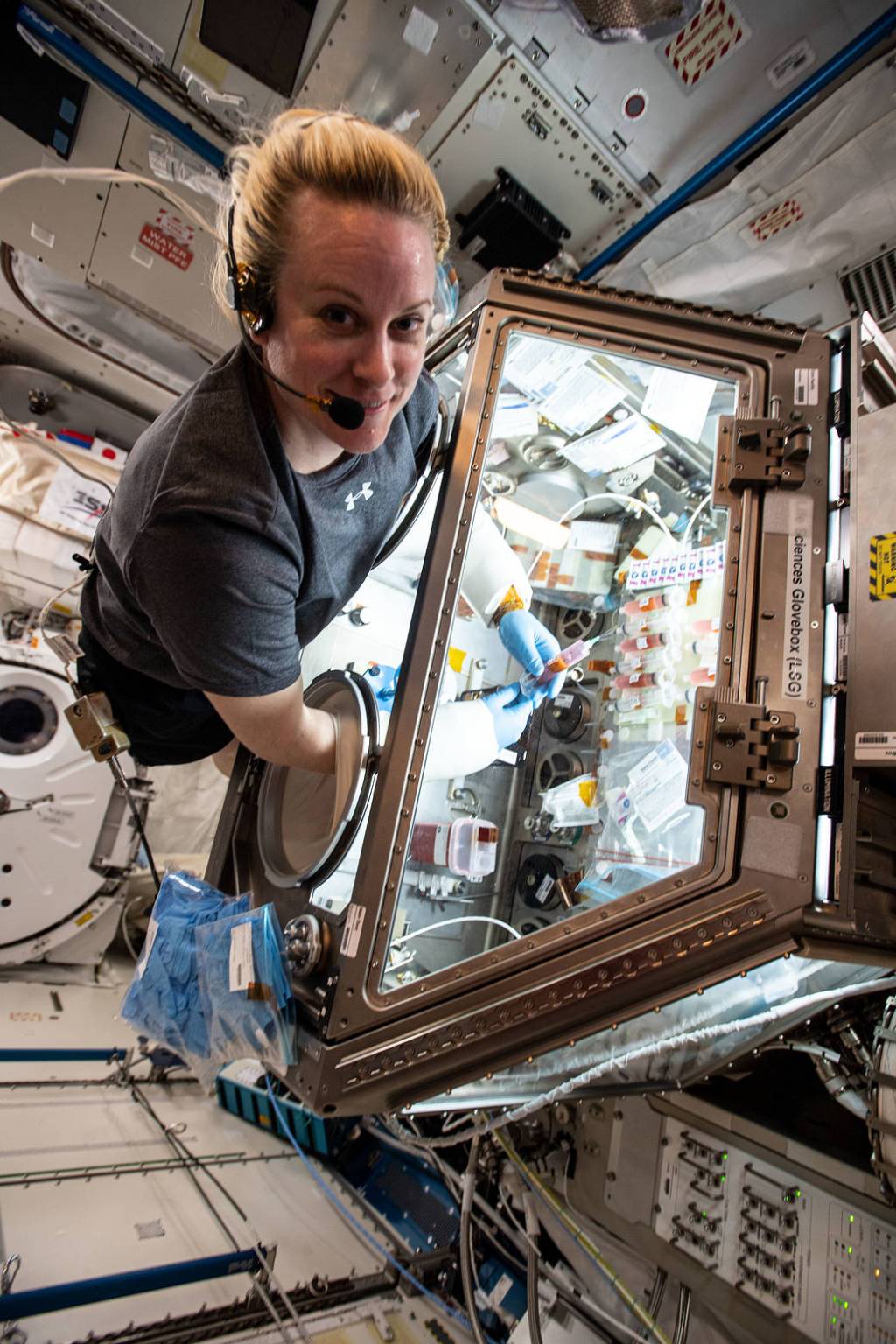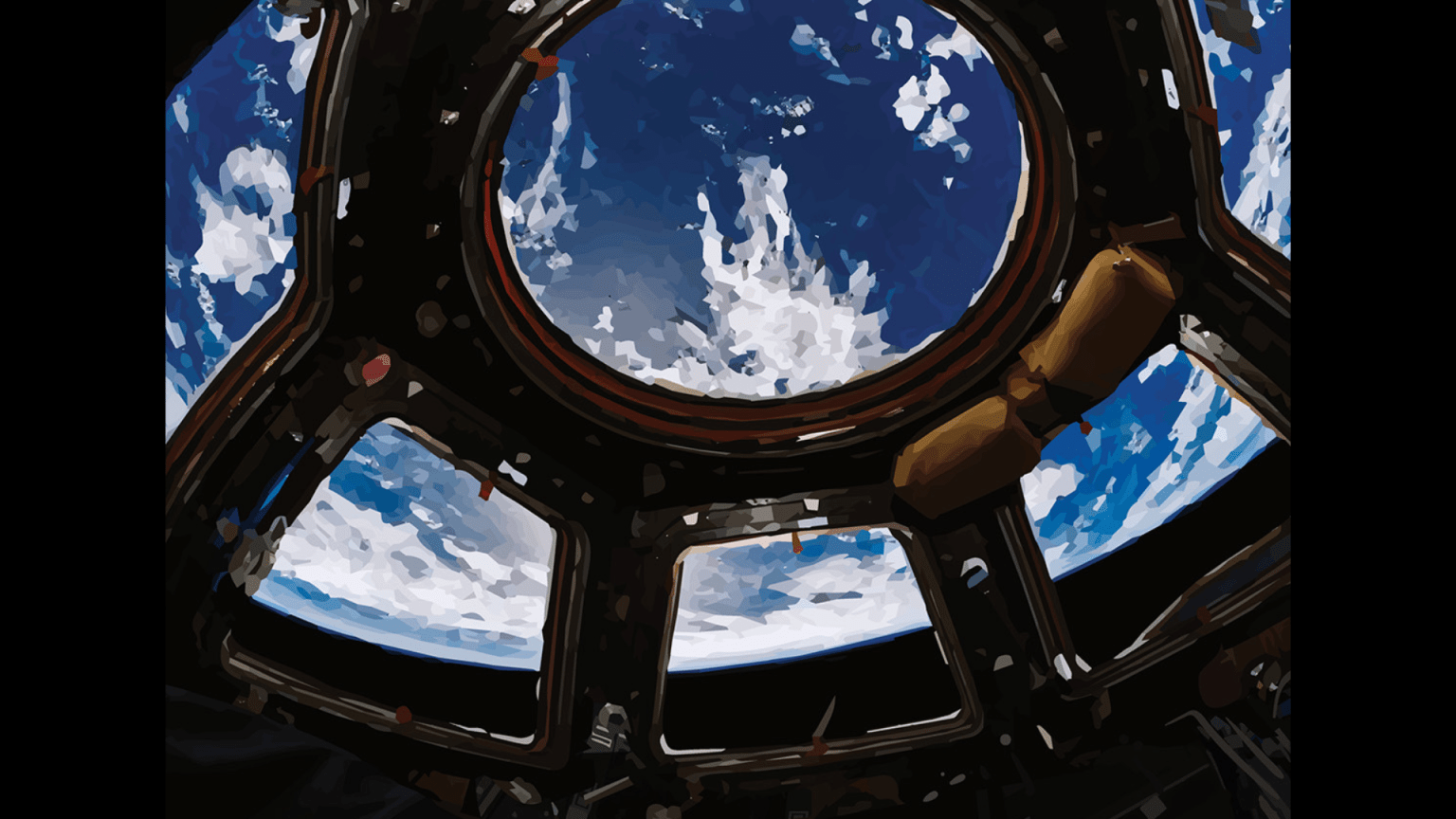Space Gardens
Science in Space December 2024 As NASA plans missions to the Moon and Mars, one challenge is figuring out how to provide crew members with enough healthy food. Bringing along a supply for months or even years in space is impractical, and stored food can lose taste and nutritional value. Growing plants in space is […]

Space Gardens
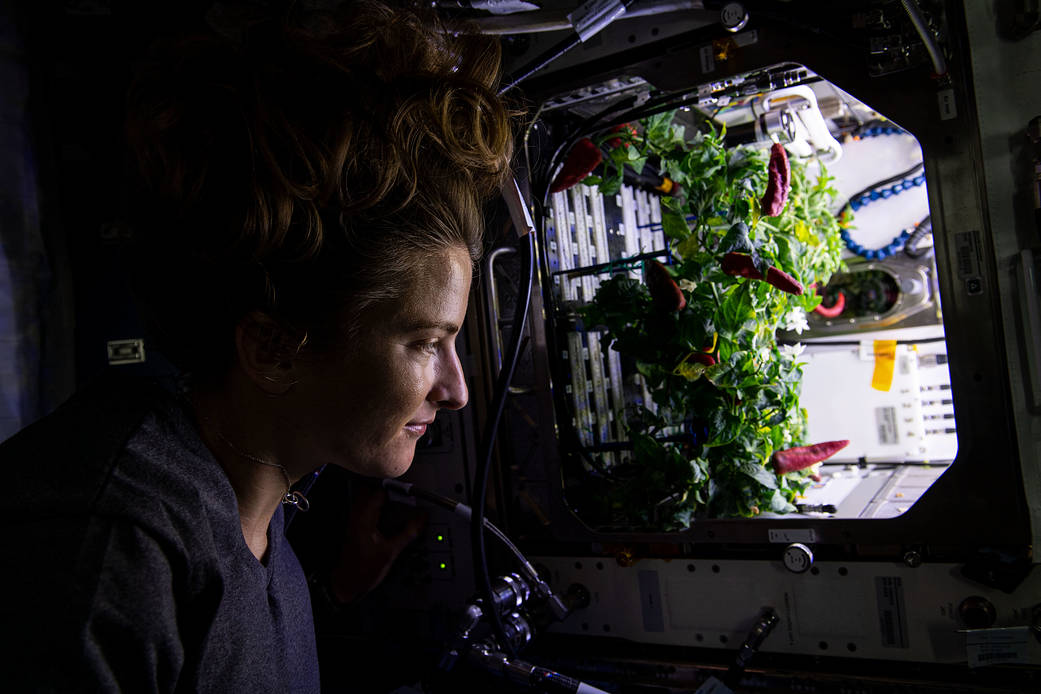
Science in Space December 2024
As NASA plans missions to the Moon and Mars, one challenge is figuring out how to provide crew members with enough healthy food. Bringing along a supply for months or even years in space is impractical, and stored food can lose taste and nutritional value. Growing plants in space is one way to help solve this problem. Tending space gardens also has positive psychological effects for crew members, and plants can be part of life support systems that provide services such as producing oxygen and reducing carbon dioxide.
A current investigation, Plant Habitat-07, looks at how plants and their associated communities of microorganisms respond to different levels of water. The study uses ‘Outredgeous’ red romaine lettuce, a food crop already known to grow well on the International Space Station. Results from this investigation could inform ways to produce healthy crops under different water conditions in space and on Earth.
Multiple studies of plants on the space station have tested a wide range of crops and methods for growing them. Researchers have successfully grown lettuces, Chinese cabbage, mustard greens, kale, tomatoes, radishes, and chile peppers in space. Here are details on results from earlier plant studies.
Better lighting
The Veg-04A and Veg-04B investigations looked at the effects of light quality and fertilizer on plant growth in space. Researchers found differences in yield and nutritional content depending on how leafy greens are grown and harvested – including choice of light spectrum (red versus blue), a consideration for design of future plant growth facilities.
It’s in their genes
APEX-04 studied molecular changes in thale cress seedlings. Researchers found differences in the expression of specific genes in the root systems of the plants, including two genes not previously known to influence root development. This finding could identify ways to genetically modify plants to grow better on future long-duration missions.
Plant Signaling, a NASA investigation conducted in cooperation with ESA (European Space Agency), studied the effects of various gravity levels on plant seedlings, and Plant RNA Regulation compared gene expression involved in the development of roots and shoots in microgravity and simulated 1 g (Earth’s gravity). Both investigations used the European Modular Cultivation System, a centrifuge that creates 1 g in space and makes it possible to examine the effects of partial gravity. The investigations found increases in the expression of some genes, such as those involved in light response, and decreases in expression of others, including defense response. These findings can help inform design of space-based plant growth facilities.
And in their hormones
Auxins are plant hormones that affect processes such as root growth. Gravity affects the abundance of these hormones and their movement within a plant. Auxin Transport, an investigation from JAXA (Japan Aerospace Exploration Agency), examined the role of auxins in controlling growth of pea and maize seedlings in microgravity. Researchers found that microgravity caused decreases in hormones involved in determining direction of growth in pea seedlings and increases of those same hormones in maize seedlings. Understanding how microgravity affects plant hormonal pathways could hep improve the design of space-based plant growth systems.
Growth and gravity
Plant development on Earth is strongly influenced by gravity, but exactly how that works at the molecular level is not well understood. APEX-03-1 investigated the effects of microgravity on plant development and, along with previous studies, showed that spaceflight triggers changes in the development of cell walls in plant roots. Strong cell walls provide mechanical strength needed for roots to grow, and this finding provides insight into how to develop plants that are well-adapted to space conditions.
JAXA’s Resist Tubule also studied the mechanisms of gravity resistance in plants. Researchers found that thale cress plants grown in microgravity exhibited reduced levels of sterols, compounds involved in a variety of cellular processes, which could limit plant growth. These findings could help scientists genetically engineer plants that grow better in microgravity.
Melissa Gaskill
International Space Station Research Communications Team
Johnson Space Center

